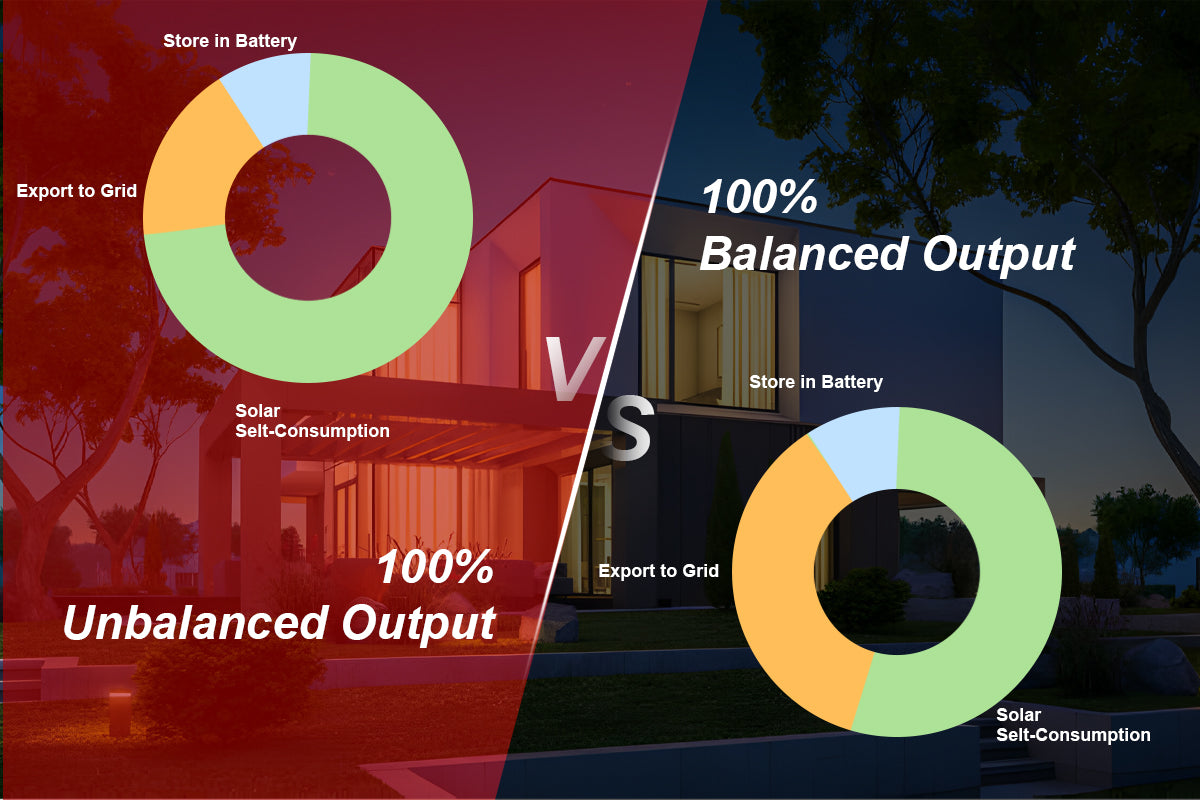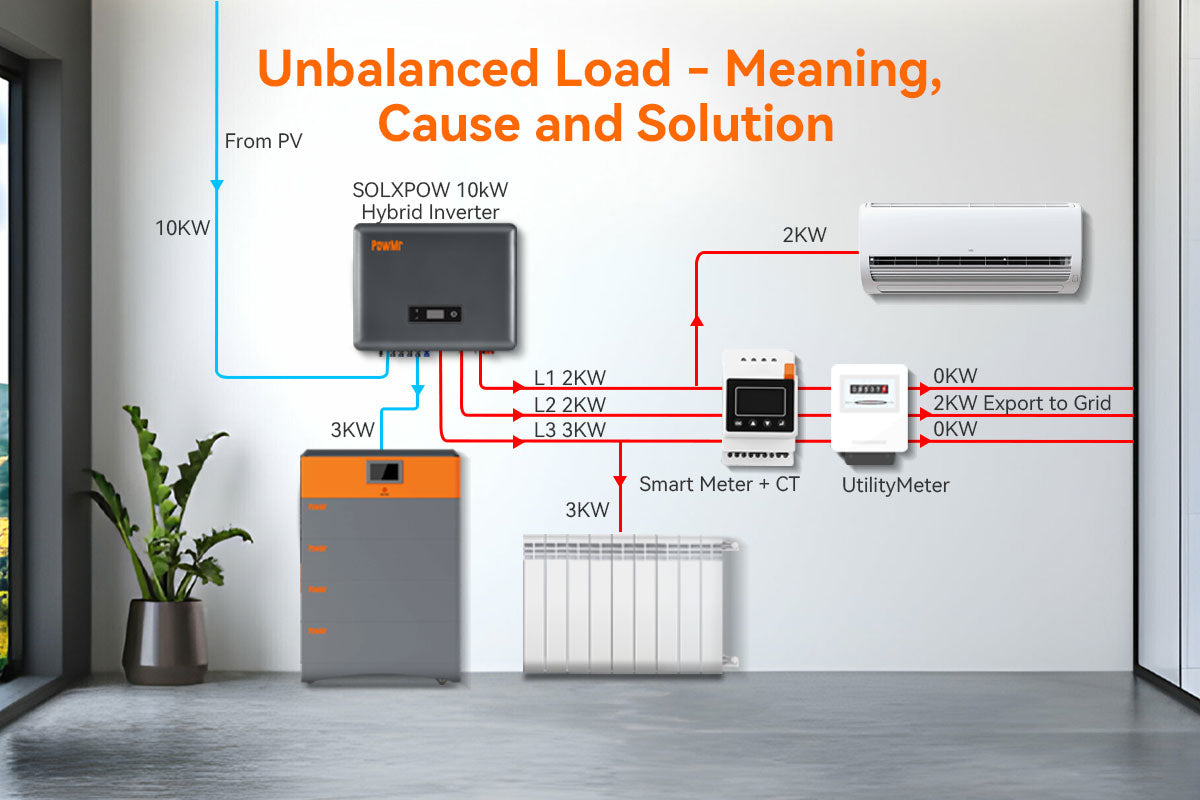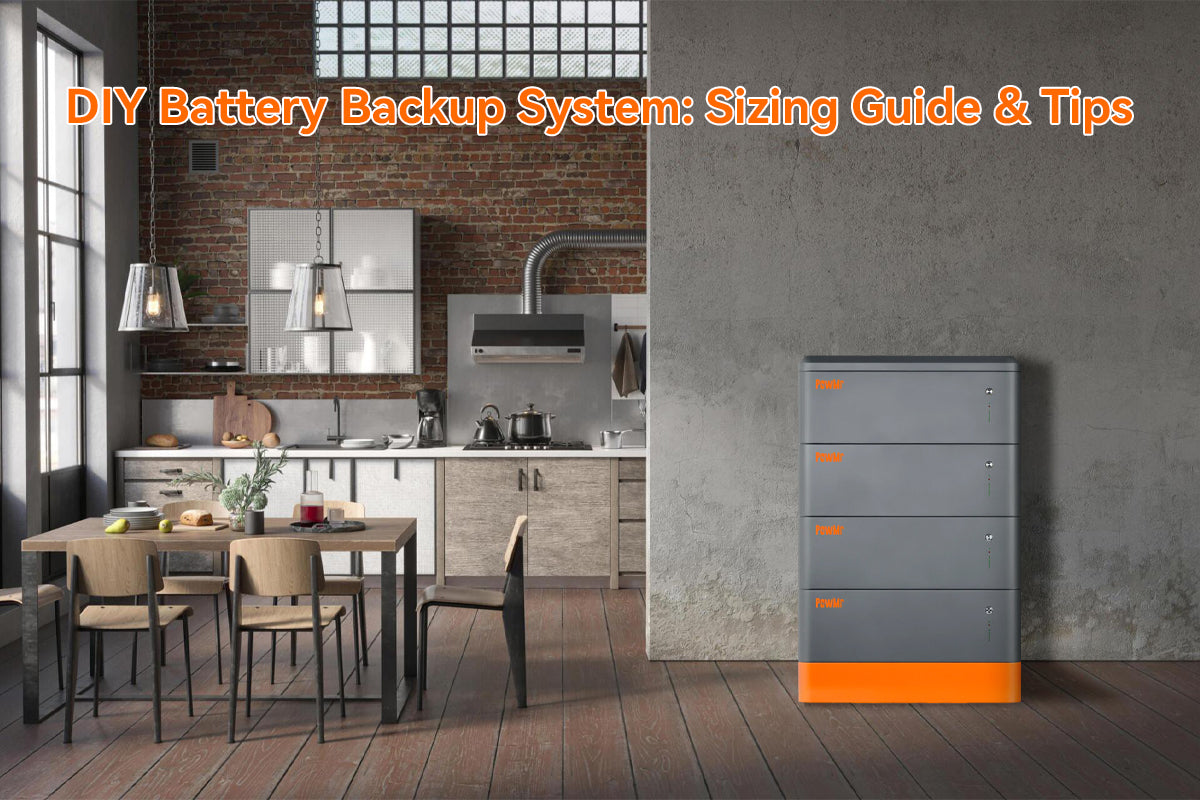In the last blog post, we explained the meaning and causes of an unbalanced load in a three-phase system and recommended a hybrid inverter supporting 100% unbalanced output to improve the flexibility of energy distribution across the three phases.
Now, we'll compare this feature with 100%balanced output three-phase inverters and discuss how unbalanced output inverters can benefit you.
Balanced vs Unbalanced Output, What's the Difference?
What is balanced output inverter?
For a three-phase inverter, balanced output implies that the power distributed by the inverter should be evenly divided among the three phases. Ideally, the power or current imbalance between any two phases should be below 1%, with a maximum tolerance of 5%.
What is unbalanced output?
In the context of unbalanced output in three-phase inverters, a greater level of imbalance is tolerated. For instance, in a scenario where there's 100% unbalanced output in a three-phase inverter, the load consumption can range from 0 to 1/3 of the rated output power on each phase. Similarly, if the imbalance is at 110%, the difference of power between any two phase would range from 0 to 11/30 of the rated output power.
This feature, which allows for varying power output based on the load consumption of each phase, greatly enhances the flexibility of power distribution in three-phase systems. Coupled with solar energy, it helps reduce dependence on the grid, thus maximizing savings on electricity bills.
Now, let's explore how unbalanced output can be advantageous to you under specific electricity billing rules.
Benefits of Unbalanced Output
In the following exposition, we will compare the PowMr Solxpow series unbalanced output three-phase inverter with conventional balanced output three-phase inverter.
Solxpow is an inverter that supports 100%/110% (depending on the model) unbalanced output, equipped with a smart meter with CT, capable of real-time monitoring of power consumption for each phase and making adjustments accordingly.
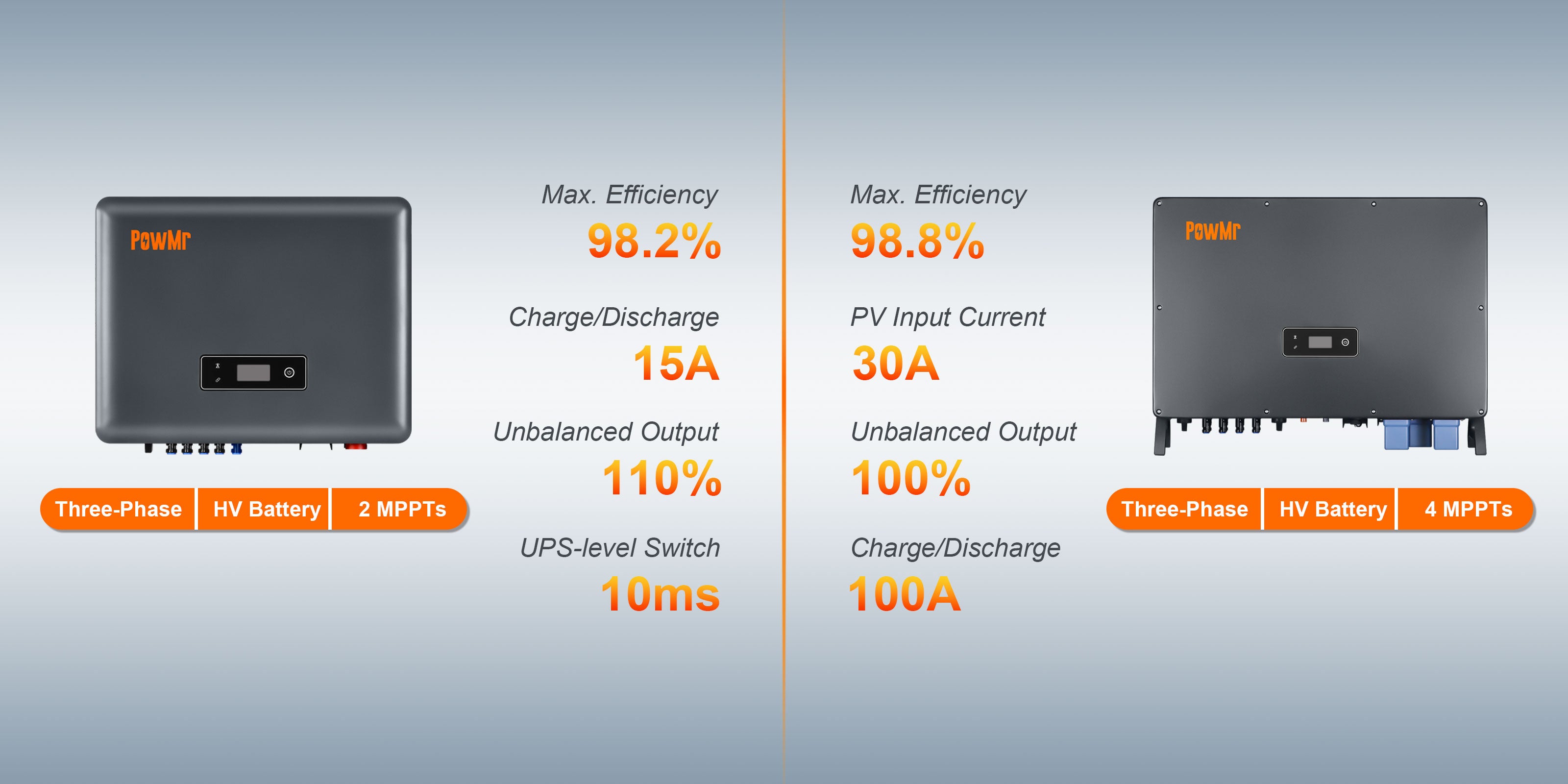
Save Electricity Bill if Charging per Phase (Grid Tie)
For users in areas without Net Metering or Feed in Tariff, or for those with an energy meter unable to balance buy/sell power, the importance of optimizing three-phase unbalanced output is paramount.
Assuming the rated power of both the solar panel array and the inverter is 15kw. And the inverter is connected to a 3kw battery for charging and discharging, prioritizing power distribution as load > battery > grid.
Balanced Output Three-Phase Inverter
Balanced output inverter distributes equal power distribution among phases. The phase with the lowest load determines the power output for each phase, with the other two phases drawing energy from the grid once the battery is full, injecting surplus solar energy into the grid.
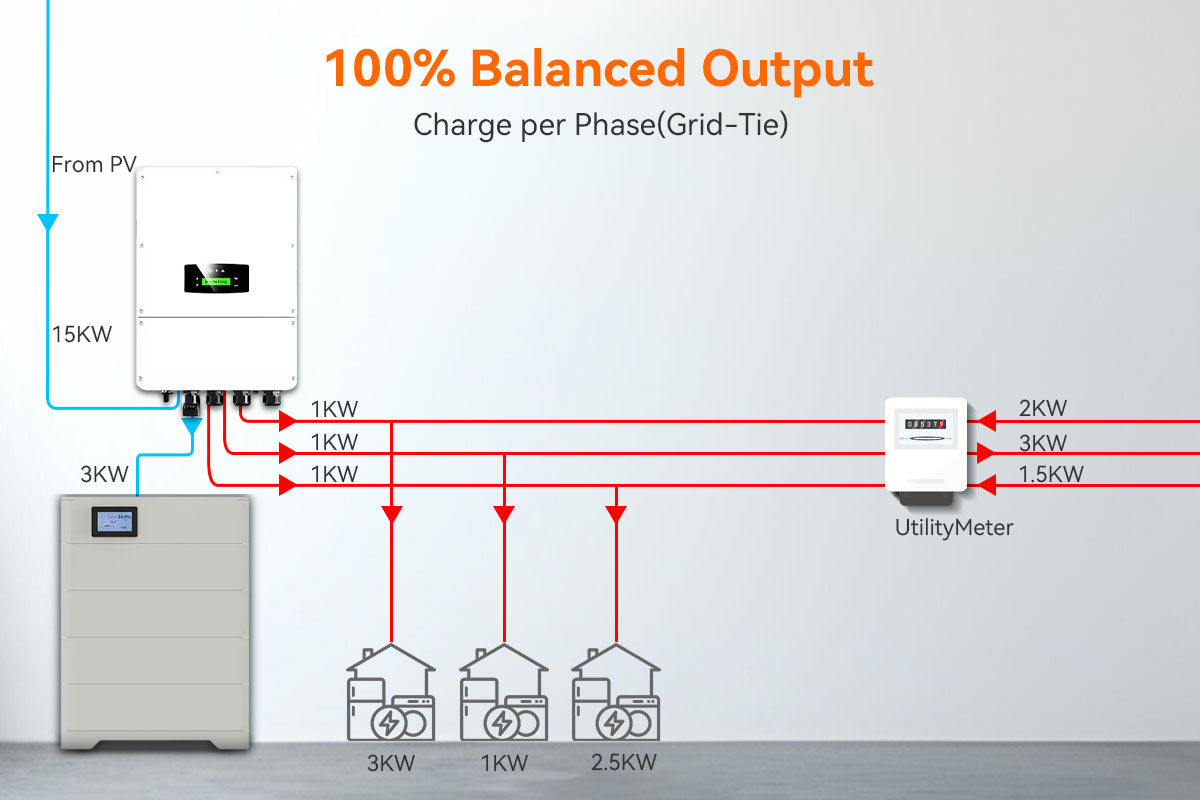
Unbalanced Output Three-Phase Inverter
Unbalanced output inverter allocates solar energy based on actual phase loads, rather than exchanging with the grid. Excess power is stored in the battery after meeting load demands, significantly enhancing solar self-consumption rates before injecting surplus energy into the grid.
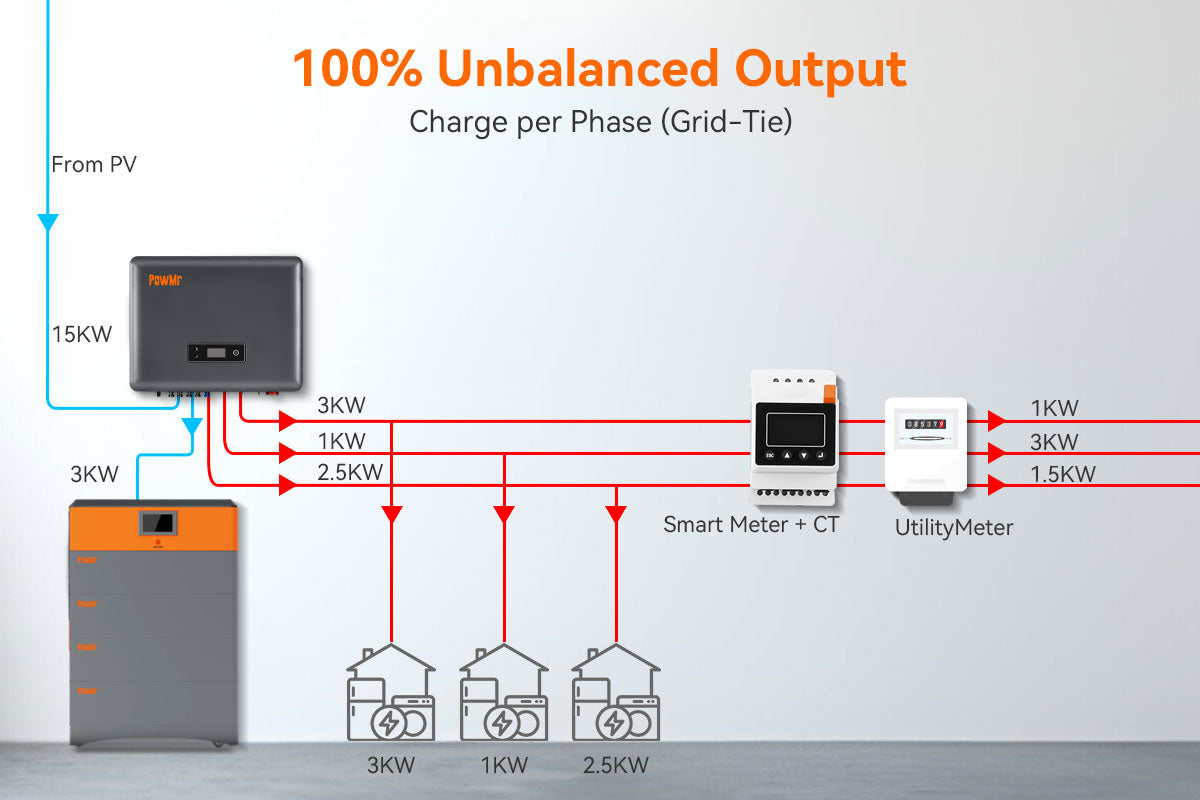
As illustrated in the table below, with loads of 3kW, 1kW, and 2.5kW for L1, L2, and L3 respectively, the total output for the balanced output inverter is 3kW, whereas for the unbalanced output inverter, the total load is 6.5kW. Considering energy stored in the battery, the solar self-consumption rate for the unbalanced output system far surpasses that of the balanced output system.
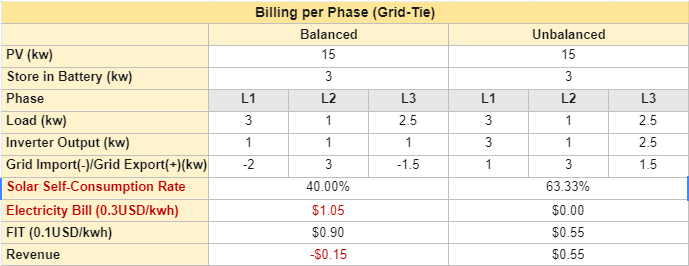
If your utility charges based on each phase's power consumption, the electricity bill for a 100% balanced output three-phase system would be exorbitant. Even with FIT in place, it might not offset the high expenses. Without FIT, you would bear the burden silently.
In contrast, the unbalanced output system achieves self-sufficiency and possibly generates revenue for you.
Maximize the Usage of Solar Energy in Zero Export System
Solxpow, equipped with Smart Meter and CT, enables real-time monitoring of individual phase consumption and precise control of export power. In the given example, the export power is limited to 0W.
We take a Zero-Export power limit scenario as an example. Due to export limitations, this also implies a significant reduction in the output of the PV array. Therefore, in regions where there are export limits, when designing a solar power system, the total power of the solar panel array should be as close as possible to the rated power of the inverter.
Assuming both the rated power of the solar panel arrays and the inverter are 10 kW, and a battery with a charging and discharging power of 3 kW is connected, the inverter prioritizes power distribution as follows: Load > Battery > Grid. The loads on phases L1, L2, and L3 are 3kW, 1kW, and 2.5kW respectively.
In a balanced output three-phase inverter:
power distribution remains equitable, with each phase's output determined by the phase with the lowest load power. The other two phases draw power from the grid. Once the battery is fully charged, the PV side only outputs 3 times the power of the smallest power consumption phase.
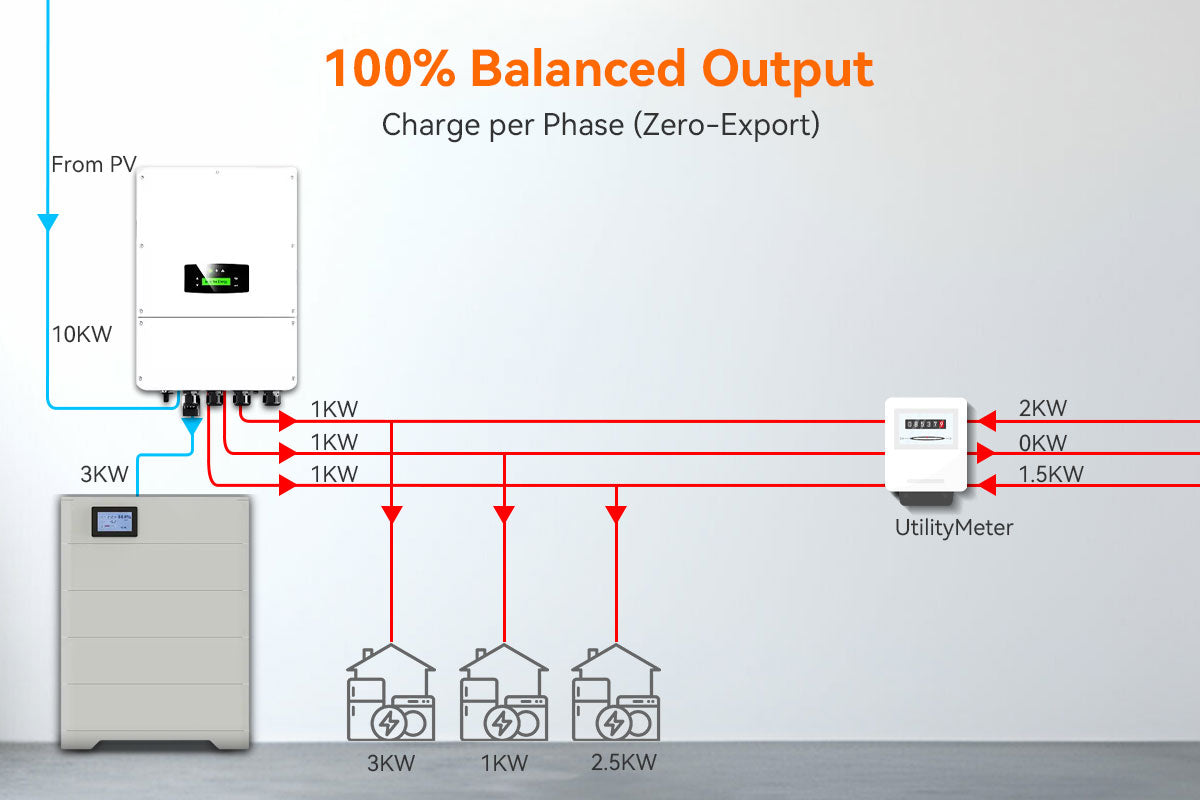
Unbalanced output three-phase inverter:
Instead of exchanging power with the grid, it continuously distributes solar power based on the actual energy demand on each phase, ensuring the load demands are met while simultaneously charging the battery.
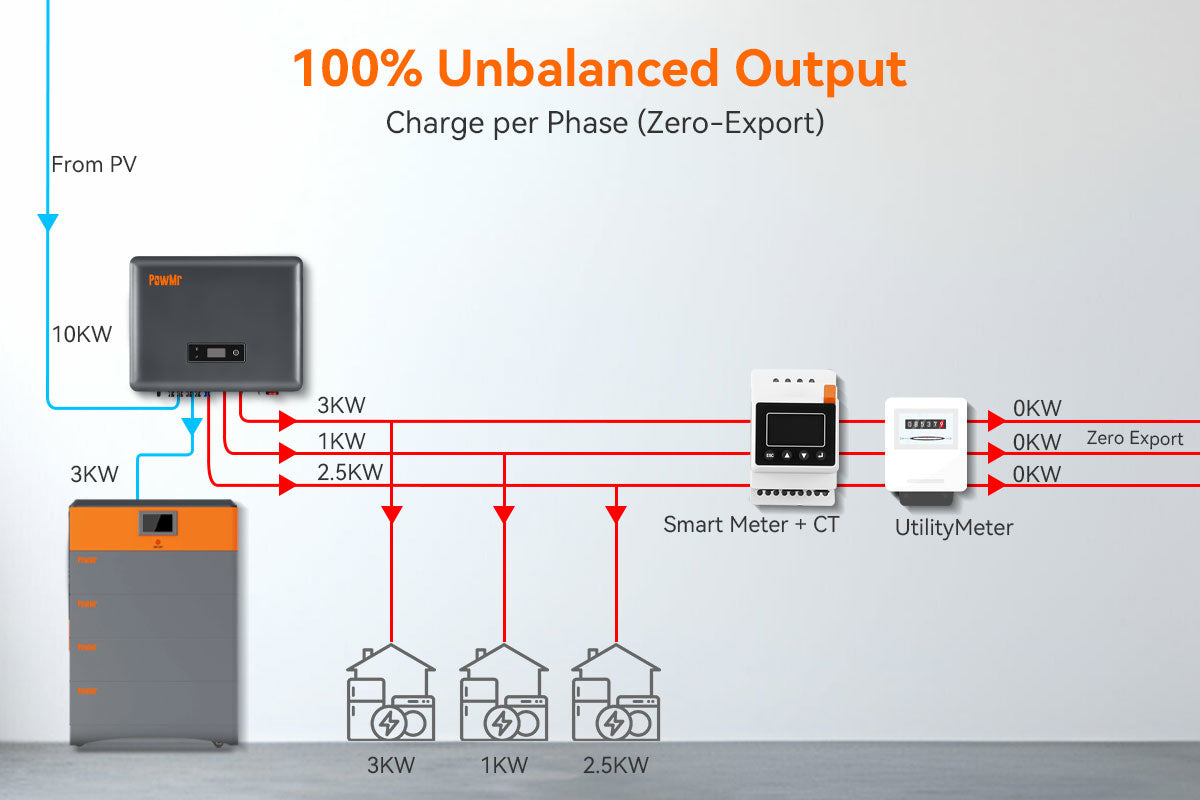
As shown in the table below, in a balanced output system, the inverter provides only 3kW of power to the load and draws 3.5 kW from the grid. In contrast, the unbalanced output inverter draws 6.5 kW of power from the PV array, achievinging self-sufficient.
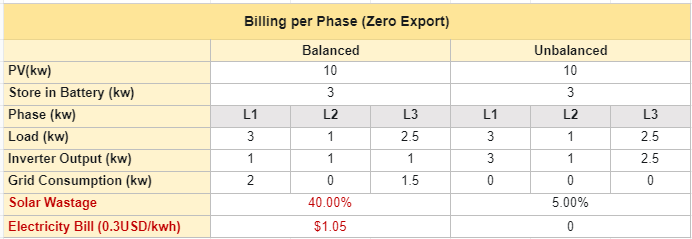
Considering the stored power in the battery, the balanced output system utilizes only 60% of the solar energy, leading users to still incur high electricity bills. On the other hand, the utilization rate of the balanced output inverter reaches 95%, minimizing the need to draw power from the grid.
Conclusion
If you do not feed electricity into the grid and can maintain equal power load across each phase in a three-phase system, you can choose a balanced output inverter.
However, if you prioritize flexibility in power distribution, especially when using both single-phase and three-phase appliances within the system, an unbalanced output inverter becomes the preferred choice. This is due to three main reasons:
- In scenarios without Net Billing, minimizing grid dependency is essential to reduce electricity expenses.
- Aspiring for self-consumption or maximizing returns from FIT schemes necessitates efficient utilization of solar energy and reducing reliance on the grid.
- Facing Export Limited or desiring to optimize solar energy usage while minimizing grid dependence and saving on electricity costs further underscores the benefits of opting for an unbalanced output inverter.

